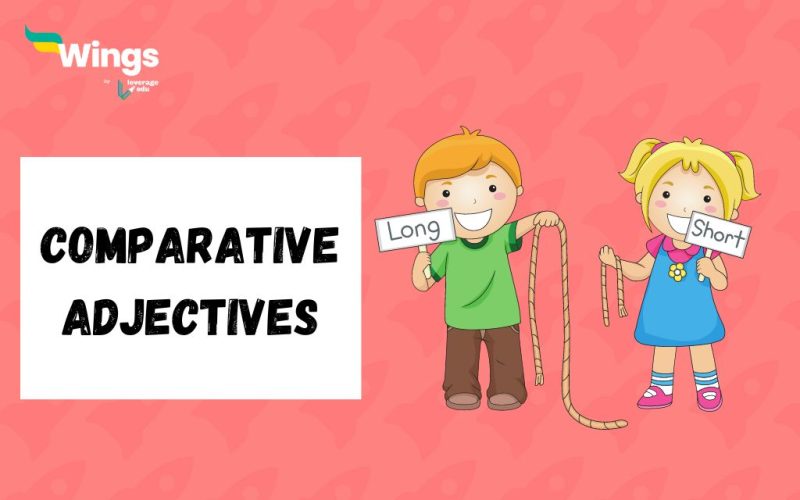When it comes to bringing out the best in comparing the nature of humans or two things, there is nothing better than comparative adjectives. In fact, they are more capable of comparison than any other regular form of adjectives. But, the real deal is how to use them without hurting the grammar rules in English.
That is where this blog article will guide you through the definition of comparative adjectives, along with their types, rules and examples. So that, the next time you use them, you can resonate with the confidence of a grammar nazi.
Learn All About Adjectives in English Grammar!
This Blog Includes:
What are Comparative Adjectives? – Definition
When we go by the books, the Comparative Adjectives come into action to compare two things in a sentence. Its formation contains the adjective + suffix (-er) or the word “more” before the adjective. So, theoretically, any adjective can act as a comparative adjective, as long as it fulfils the rule of formation.
Let’s take a look at the example given below for a better understanding:
| Adjective | Comparative |
| Big | Bigger |
| Fast | Faster |
| Intelligent | More Intelligent |
What are the 3 Types of Comparative Adjectives?
There are three types of Comparative Adjectives you can apply to your writing, speech, or any other occasion:
- Regular Comparative Adjectives
- Irregular Comparative Adjectives
- Periphrastic Comparative Adjectives
However, to know in detail about these types of adjectives, you should check the information available henceforth.
Regular Comparative Adjectives
To make comparisons with the Regular Comparative Adjectives, you need to add the suffix “-er” to the end of adjectives. For example:
| Adjective | Comparative |
| Cold | Colder |
| Expensive | More Expensive |
Irregular Comparative Adjectives
On the other hand, some adjectives have irregular forms. In other words, you would get a new word after making the comparison as demonstrated in the example below:
| Adjective | Comparative |
| Good | Better |
| Bad | Worse |
| Far | Farther/Further |
| Little | Less |
| Much | More |
Periphrastic Adjectives
Unlike Regular and Irregular ones, the formation of Periphrastic Adjectives requires you to add “more” before the adjective. Moreover, this is applicable to wordy adjectives or the ones containing “y” at the end.
Take a look at the following examples for a better understanding:
| Adjective | Comparative |
| Expensive | More Expensive |
| Intelligent | More Intelligent |
| Beautiful | More Beautiful |
Learn About the Degree of Comparison Rules Here!
Comparative Adjectives Rules
Learning all about the types of Comparative Adjectives will surely enhance your knowledge. However, there are certain rules you need to be aware of while implying these adjectives into usage. So, let’s take a look at the specific rules of this Adjective.
Rule 1: Use the Comparative degree to compare ‘two’ things.
Example: My new car is faster than my old one.
Rule 2: Be sure to include “than” to indicate what you are comparing something to.
Example: Sam has become smarter than he used to before.
Rule 3: When using the Superlative degree, be sure to include the article ‘the’ that you are talking about the most or least.
Example: This is the best book I have ever read.
Examples of Comparative Adjectives
Now that you have come so far, go through these examples of adjectives and try to find which rules from the above are applicable here:
- The weather is getting colder and colder.
- This house is more expensive than that house.
- This restaurant has better food than that restaurant.
- She is taller than me.
- He is stronger than his father.
- I’m more intelligent than my brother.
- They are smarter than us.
- This cat is fluffier than that cat.
- This pizza is tastier than that pizza.
- This movie is funnier than that movie.
- This song is more popular than that song.
- This dress is more beautiful than that dress.
- This vacation is more relaxing than that vacation.
Explore more exciting reads below:
This was all about the Comparative Adjectives. Hope you understand the concept and where it’s used. You can also follow Leverage Edu for more exciting and informative blogs.
 One app for all your study abroad needs
One app for all your study abroad needs














 45,000+ students realised their study abroad dream with us. Take the first step today.
45,000+ students realised their study abroad dream with us. Take the first step today.

